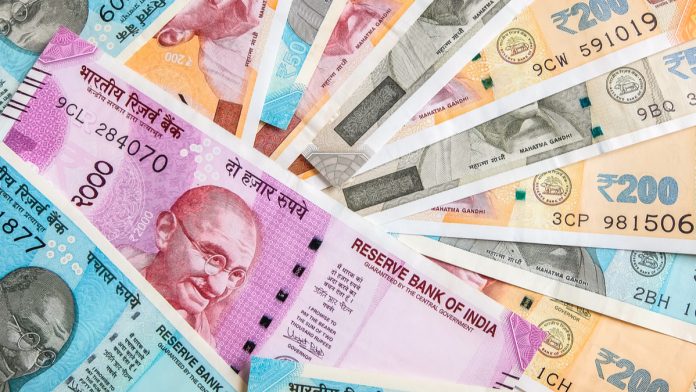- Indian Rupee (INR) eases but it set to be flat across the week
- Indian FPI were net buyers in April
- US Dollar (USD) falls versus peers
- US non-farm payroll data is due
The US Dollar Indian Rupee (USD/INR) exchange rate is rising after losses in the previous session. The pair fell -0.05% in the previous session, settling on Tuesday at 81.71. At 10:00 UTC, USD/INR trades +0.04% at 81.75 and trades in a range of 81.64 to 81.75. The pair is set to rise just 0.03% across the week.
Foreign portfolio investors were net buyers of Indian equities in the previous month, the first of the new financial year. FPI purchased shares worth $1.42 billion net in April, marking the highest level since last November. Stronger than forecast corporate earnings and stable macro indicators have resulted in a return of FPIs into Indian equities.
The Nifty 50 jumped 4% across April, marking its best monthly performance since November.
The recent slide in oil prices has also supported the Rupee. WTI oil trades down over 9% this week.
The US Dollar is rising against the Rupee but is falling versus its major peers. The US Dollar Index, which measures the greenback versus a basket of major currencies, trades -0.13% at the time of writing at 101.27 and is set to fall 0.4%.
Falling in early trade as investors fret over the continued turmoil in EU S banking system and are betting that the Federal Reserve could cut interest rates earlier as a result.
While the Federal Reserve raised interest rates by 25 basis points on Wednesday and signalled that it could pause rate hikes going forward. However the market is expecting the Fed to start cutting interest rates as soon as July, with several rate cuts expected by the end of the year.
Attention now turns to the US non farm payroll report which is expected to show that 180,000 jobs were added in April down from 236,000 in March. The unemployment rate is expected to tick higher to 3.6%, up from 3.5%. And average earnings are set to hold steady at 4.2%.
Weak jobs data could fuel dovish Federal Reserve expectations and pull the USD lower.
.





